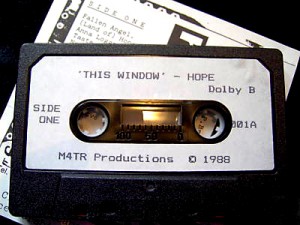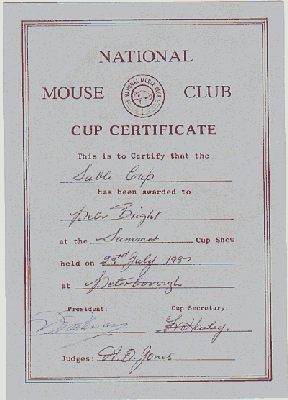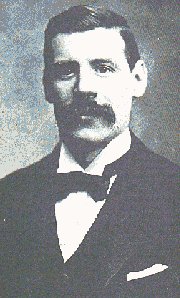Cassette Culture was an offshoot of the mail art movement of the 1970s and 1980s, it emerged from the DIY ethic of punk. In the UK cassette culture was born during the post-punk period, 1978–1984, extending through the late ’80s and into the ’90s. It was a postal-based network identical to the mail art scene.
The packaging and designing of the insert sleeve of cassette releases was an important part of the movement, a high degree of creativity and originality was visable in the execution of the overall appearence of the prioduct. Most of the packaging relied on traditional plastic shells with a photocopied “J-card” insert but some artists broke away from the restrictive dimensions of the audio cassette format, either in a slick graphic way or by taking an anti-art stand point – using a conceptual, DADA methodology .
BWCD released a cassette by Japanese noise artist Aube that came tied to a blue plastic ashtray shaped like a fish. EEtapes of Belgium release of This Window “Extraction 2” was packaged with an X-ray of a broken limb in 1995. The Barry Douglas Lamb album “Ludi Funebres” had the cassette box buried in some earth contained in a larger outer tin and covered in leaves.
 The European scene was very active during this period with exceptional ‘labels’ appearing in Germany and Belgium.
The European scene was very active during this period with exceptional ‘labels’ appearing in Germany and Belgium.
IRRE Tapes (Germany) run by Matthias Lang evolved out of the IRRE Fanzine which he published regularly during the early 1980’s covering New Wave, Post Punk and the German Underground. This European cassette label helped to spread the word around the world, supporting the independent, self financed artist, releasing material by the likes of Brume, Maeror Tri, City Of Worms and This Window. His eclectic taste covered the whole range of the DIY, Independent Underground music scene from Experimental Electronica to Guitar Pop.
Below is an extract from an interview on The Living Archive Of Underground Music, which is an archive dedicated to Cassette culture, home taping, tape trading and mail art from the 1980s to the present. The Living Archive Of Underground Music is written and edited by Don Campau. Read more…
Wie hattest Du das Label bekannt gemacht? Durch Magazine, andere Labels, Radio?
How did you spread the word of the tape label? Magazines, other labels, radio?
Tja ob IRRE Tapes je bekannt war? Wenn dann eher durch das unabhängige Netzwerk in der ganzen Welt, damals konnte man auch noch kostengünstig Tapes in andere Länder schicken… die Mehrzahl der Tapes wurde mit Gleichgesinnten in der ganzen Welt getauscht, so richtig kommerziell verkauft wurden die wenigsten – dafür hab ich heute aber auch noch unzählige Kisten alter Tapes die ich im Tausch damals bekommen hatte. Es gab zwar auch kommerziellere Vertriebe, die aber nie wirklich lange z.B. der tolle 235 Laden ich glaube in Bad Honnef. Die hatten auch mit tolle Mailorder-Kataloge, geniale Ideen z.B. gab es da das Tape des Monats das man per Dauerauftrag bekommen konnte……
Well, if IRRE-tapes were really that popular? If so, the independent network all around the world helped to make the label popular…at that time postage for tapes to be sent to other countries was quite cheap…the majority of tapes was swapped with artists all around the world and only a very few were really commercially sold. I still have many boxes full of old tapes that I received by trade. There were also more commercial distributors that never existed so long, like the 235-shop in Bad Honnef. They had great mailorder-catalogues and it was even possible to get there the „tape of the month“ by periodical payment order.
 The Insanely Happy EP – Insane from Belgium
The Insanely Happy EP – Insane from Belgium
Alain Neffe is probably one of the most influential ‘cassette underground’ people around, his Belgian label Insane released many of the 1980′s heroes of the home taping and mail art scenes. Here is an opportunity to get a collectors edition … Continue reading →
Related articles
-
Intrendent – Interview German supporter and releaser of the cassette culture period.
- Who is Peter Bright? – from Wikipedia (morguegallery.com)
- Art music (sitemaps-xml.com)
- Last Live Session (optimiseduk.com)










 Biography
Biography